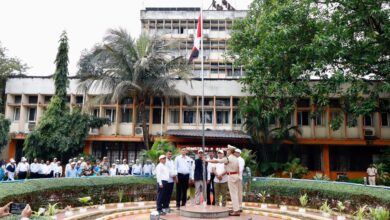Road to Busan : Towards An International, Legally Binding Deal On Plastic Pollution
Microplastics and plastic pollution needs to be tackled, together with its impacts, through a full-life-cycle approach

To develop an international legally binding deal on plastic pollution, including in the marine environment (INC-5), is scheduled to take place from November 25th to December 1st, 2024 at the Busan Exhibition and Convention Center in Busan, Republic of Korea.
Global plastic production has risen exponentially over the last decades – now amounting to some 400 million tonnes per year according to the United Nations Environment Programme.
The rapidly growing production and consumption of plastic, coupled with a lack of a circular approach – keeping plastic in the economy and out of the environment – and the extensive leaking of microplastics into nature, constitute an urgent environmental emergency according to UNEP.
Currently, it is estimated that 19-23 million tonnes of plastic leaks into aquatic ecosystems annually – from lakes to rivers to seas – from land-based sources. Exacerbated by contributions from sea-based sources, this combined plastic leakage is having major impacts on ecosystems, economies and society – including on human health.
Due to solar radiation, wind, currents and other natural factors, plastic breaks down into microplastic (smaller than 5 mm) and nanoplastic (smaller than 100 nm) particles. ‘Primary’ microplastic particles are also shed by products such as synthetic textiles and tyres, through abrasion. Nanoplastics are able to cross cell membrane walls and enter living organisms. Macro-plastics (pieces larger than 0.5 mm) made up 88% of global plastic leakage to the environment in 2019, around 20 million metric tons, polluting all ecosystems. Marine microplastics in our sea food find way into human systems.
The total cost of damage from plastic pollution by marine industries in 2015 in the Asia-Pacific Economic Cooperation (APEC) region has been estimated at US$ 10.8 billion annually.
According to Inger Andersen, Executive Director of the UN Environment Programme (UNEP), “ the plastic pollution crisis continues to engulf the world and we have just a few months left before the end of year deadline agreed upon in 2022. I urge members to show continued commitment and flexibility to achieve maximum ambition.”
The previous session INC-4 held from 23 to 29 April in Ottawa, Canada ended with an advanced draft text of the agreement.
9.2 billion tonnes of plastic estimated to have been made between 1950 and 2017. More than half this plastic has been produced since 2004. Of all the plastic discarded so far, only 14% has been incinerated and less than 10% has been recycled. And the remainder has been disposed of in landfills and dumps or released into the oceans.
The high and rapidly increasing levels of plastic pollution, including microplastics, represent a serious environmental problem at a global scale, negatively impacting the environmental, social and economic dimensions of sustainable development .
Microplastics and plastic pollution needs to be tackled, together with its impacts, through a full-life-cycle approach. Prevention of plastic production along with minimisation and reuse of plastic is the only way forward.
The writer of this article is Dr. Seema Javed, an environmentalist & a communications professional in the field of climate and energy




